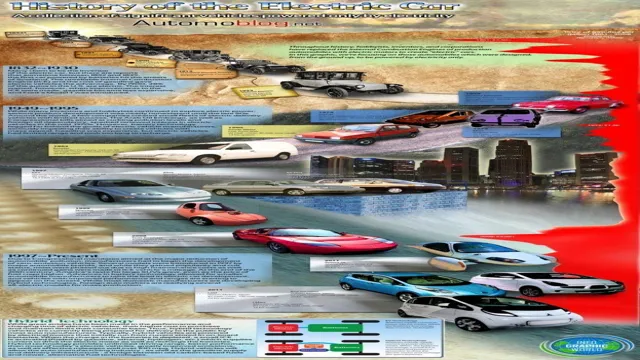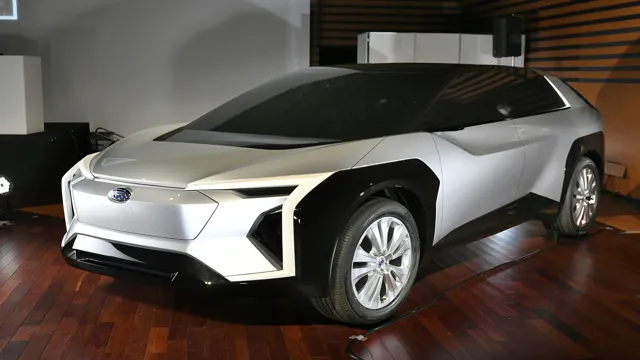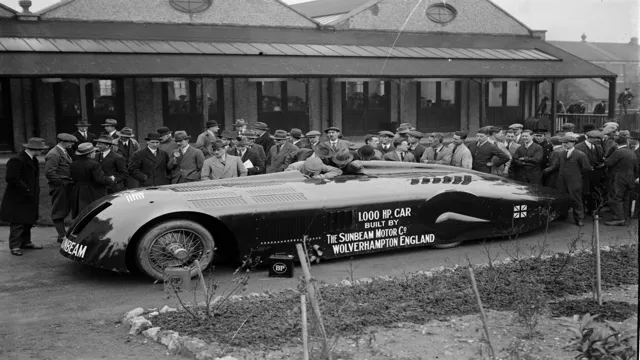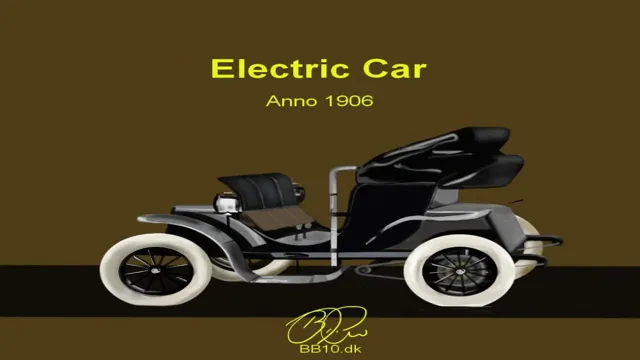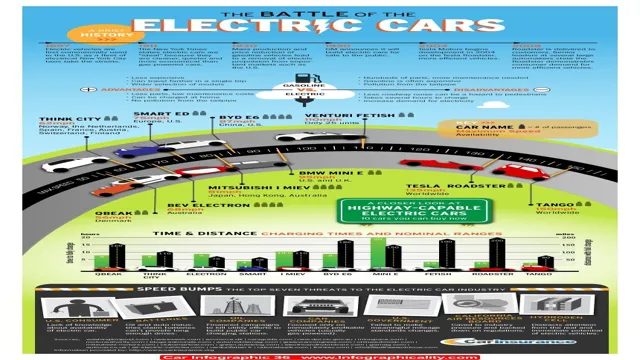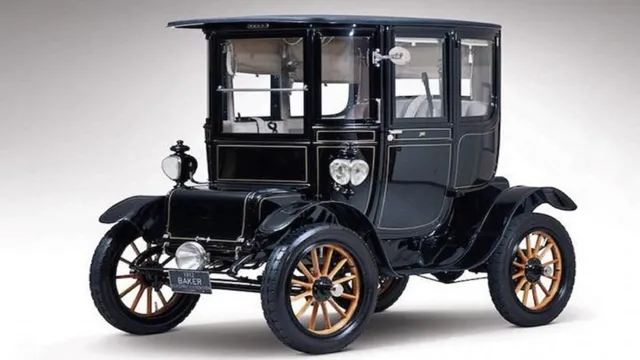Revolutionizing Transportation: A Fascinating Look at the Short History of Electric Cars
Electric cars seem to be everywhere these days, but have you ever wondered how they came to be? The short history of electric cars is a fascinating journey from the early days of experimentation to the cutting-edge technology of today. It all started in the early 1800s when inventors began toying with electric power, and in 1837, the first electric vehicle was invented. But it wasn’t until the late 1800s that electric cars began to gain popularity, particularly with women who appreciated their quiet operation and ease of use compared to gas-powered vehicles.
However, the rise of the internal combustion engine soon surpassed electric cars, and they fell out of favor in the early 1900s. But electric cars made a comeback in the 2000s, driven by concerns about air pollution and climate change. Advancements in battery technology and government incentives for electric vehicle owners helped to boost their popularity, and now electric cars are seen by many as the future of transportation.
With automakers investing heavily in electric vehicle production and charging infrastructure expanding worldwide, the shift to electric vehicles is only just beginning. So, why have electric cars become so popular, and what does the future hold? In this post, we’ll explore the history of electric cars, the advantages they offer, and where they’re headed. Whether you’re a longtime fan of electric cars or just curious about this burgeoning industry, join us on a journey through the short history of electric cars.
Early Innovations
Let’s take a quick trip down memory lane to explore the early innovations that led to the current state of electric cars that we see today. In the late 19th century, inventors such as Thomas Parker and Magnus Volk were experimenting with electric-powered vehicles in the UK. The first electric car was actually built in the 1830s, but it wasn’t until the 1880s that the first practical electric car was introduced.
These early models were limited by short ranges and low speeds, making them only suitable for urban use. Fast forward to the 1970s, during the oil crisis, electric cars regained the spotlight as a solution to the energy crisis. Automakers such as General Motors and Ford experimented with developing electric cars, but the technology was still limited, and the market was not ready for them.
However, the desire for sustainable mobility has never died down, and with advancements in battery technology, electric cars have been steadily growing in popularity. Today’s electric cars have come a long way in terms of range, speed, and affordability, giving drivers a clean, sustainable, and cost-effective alternative to traditional fossil fuel-powered vehicles.
1830s-1900s: Early Electric Cars in the United States and Europe
Electric cars may seem like a relatively new innovation, but in reality, they’ve been around for over 150 years! The first electric car was introduced in the United States in the 1830s, but it wasn’t until the late 1800s and early 1900s that they really started to gain popularity. Thomas Davenport, an American inventor, is credited with creating the first practical electric motor in 1834, and by the late 1800s, electric cars were being produced by a number of different companies in both the United States and Europe. Early electric cars had a limited range, typically only able to travel around 20-40 miles before needing to be recharged.
However, they were incredibly popular with urban drivers who appreciated their quiet operation, lack of fumes, and ease of use. In fact, electric cars were so popular in the 1800s and early 1900s that they actually outsold gasoline-powered cars for a time!
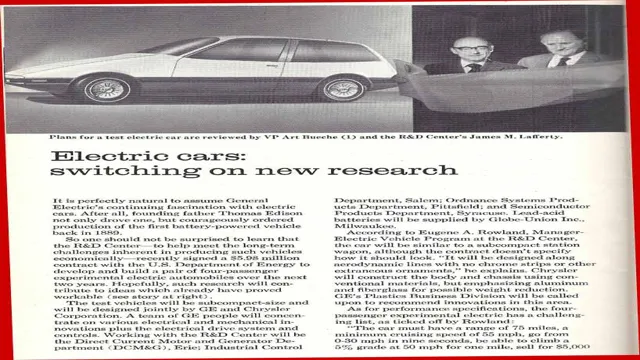
1970s-1990s: EVs Return with Limited Success
During the 1970s-1990s, electric vehicles made a return with limited success. Early innovations focused on improving battery technology, leading to the development of lead-acid batteries that were lighter and more efficient. This led to the introduction of electric vehicles such as the General Motors EV1 and the Toyota RAV4 EV, which had an operating range of up to 100 miles.
However, these early electric vehicles had limited battery capacity and charging infrastructure, making them unpopular with consumers. Furthermore, the market demand for larger, more powerful vehicles made electric cars unappealing to manufacturers. As a result, electric vehicles failed to make a significant impact in the traditional automobile market during this time period.
Despite these challenges, the groundwork was laid for the modern electric vehicle market, which has thrived due to advancements in battery technology and the increased focus on sustainability.
Recent Developments
The history of electric cars goes back a long way, with the first electric car being built in the 1800s. However, it wasn’t until the 1990s that they began to gain popularity, thanks to advances in battery technology and environmental concerns. Since then, the electric car market has seen a steady rise, with more affordable models being released and the development of rechargeable batteries with higher capacities.
In recent years, companies such as Tesla have taken the market by storm, creating sleek and sophisticated electric cars that are both luxurious and eco-friendly. With the rise of electric cars, there has also been an increase in charging infrastructure, making it easier and more convenient for people to switch to electric vehicles. As technology continues to improve, the future looks bright for electric cars as they become more accessible and affordable to the average consumer.
2000s: A New Wave of Electric Cars Take the World by Storm
In the early 2000s, a new wave of electric cars emerged, and they took the world by storm. With increasing concerns about climate change and fuel prices, people started to look for alternatives to traditional petrol and diesel vehicles. Manufacturers like Tesla, Nissan, and Chevrolet led the way with electric cars that offered long ranges, fast charging times, and sleek designs.
In recent years, there have been even more developments in the field of electric cars, with companies like Audi and Porsche introducing highly anticipated models. Governments around the world are also getting on board, offering incentives for people to switch to electric cars and investing in charging infrastructure. As a result, electric cars are becoming more accessible and affordable, and they are quickly gaining popularity.
It’s an exciting time to be a fan of electric cars, and it’s clear that they are here to stay.
2010s-Present: Electric Cars Go Mainstream
In the 2010s, electric cars became increasingly popular and more affordable, sparking a wave of innovation in the auto industry. The development of better batteries with longer ranges and faster charging times allowed electric cars to become a practical option for many consumers. Tesla led the way in making electric cars mainstream with their sleek designs and impressive performance, while traditional automakers like Nissan, Chevrolet, and BMW introduced their own electric models to the market.
Governments around the world also began offering incentives for consumers to purchase electric vehicles in an effort to reduce greenhouse gas emissions and combat climate change. While there are still some challenges to overcome, such as the lack of widespread charging infrastructure, the future looks bright for electric cars as more and more people recognize their benefits for the environment and their own wallets.
2020 and Beyond: The Future of Electric Cars
The recent developments in the electric car industry have been nothing short of astounding. Major automakers are continually investing in research and development, and electric cars are becoming more accessible to the average consumer. Battery technology has also improved, increasing range and reducing charging times.
Tesla’s success has spurred competition, leading to exciting new electric car models from traditional car manufacturers. As governments worldwide set ambitious targets to reduce emissions, the electric car market is set to explode. It’s not just about reducing pollution and combating climate change; electric cars also offer numerous benefits such as lower operating costs and a quieter, smoother ride.
It’s an exciting time for electric cars, and the future looks bright.
Environmental Benefits and Future Possibilities
A Short History of Electric Car: Environmental Benefits and Future Possibilities Electric cars have come a long way since the early days of EVs in the 1800s. While electric vehicles have proven to be viable transportation options, it wasn’t until the recent years that they became mass-market products. Aside from being cheaper to operate and maintain than traditional combustion engine vehicles, electric cars are also better for the environment.
They produce far fewer greenhouse gas emissions than their gas-powered counterparts, which helps to combat climate change and improve air quality in cities. Furthermore, the development of better batteries and charging infrastructure, along with advances in automation, make electric cars more appealing than ever before. As we move forward, we can expect to see more electric cars on the roads, and with them, a reduction in our carbon footprint and a cleaner environment.
Emission Reductions and Energy Independence
Emission Reductions As we strive to reduce greenhouse gas emissions and combat climate change, the benefits of emission reductions are clear. By decreasing our dependence on fossil fuels, we can improve air quality, reduce the risk of health problems, and protect our environment. Furthermore, reducing emissions can contribute to energy independence, as we rely less on oil-rich countries and more on renewable energy sources like solar and wind power.
While sustainable energy sources still require investment and development, the possibilities for a future fueled by clean energy are growing every day. We can look forward to a brighter, cleaner future where our energy comes from sources that don’t harm our planet or our health. By making the necessary changes to reduce emissions, we can ensure a better quality of life for generations to come.
Battery Technology Innovations and Future Potential
The advancements in battery technology are not only impressive, but they also offer a wide range of environmental benefits that pave the way for a sustainable future. As battery technology continues to improve, so does the potential for reducing our carbon footprint. Lithium-ion batteries, the most popular type of rechargeable battery in the world, are becoming more efficient and cost-effective to produce.
There is also a growing interest in developing solid-state batteries that offer even greater energy density, faster charging times, and enhanced safety features. With the continuous growth of the electric vehicle market, there is an increasing demand for better and more powerful batteries to power the vehicles. Electric cars powered by lithium-ion batteries can help reduce air pollution and greenhouse gas emissions significantly.
Other green technologies such as solar panels and wind turbines also rely on battery storage systems as a backup source of energy, enabling us to use renewable energy sources even when the sun isn’t shining or the wind isn’t blowing. As battery technology continues to evolve, their potential applications are limitless. From powering household appliances to large scale industrial operations, batteries have the ability to revolutionize the way we generate and consume electricity.
As industries move towards adopting more sustainable practices, the development of better battery technology is key to a greener future. With sufficient investment in research and development, we could soon see revolutionary battery technology that can store energy more efficiently, and safer than anything we’ve seen so far – marking an exciting step towards a greener, cleaner future.
Conclusion: From Humble Beginnings to the Future of Driving
And so, the short history of the electric car may have seemed like a rollercoaster ride of highs and lows, but it’s safe to say that the future looks bright. With technological advancements and a growing concern for our planet, electric cars are more popular than ever. The once-nerdy electric car is now the epitome of cool, and it’s not just reserved for the environmentally conscious.
From luxury models to affordable options, there’s an electric car to suit everyone’s needs. So, hop in and experience the smooth, quiet ride of an electric car – the future of driving is electric!”
FAQs
What is the history of electric cars?
The first electric car was built in the 1830s, and throughout the early 20th century, electric cars were popular before being replaced by gasoline-powered vehicles. In recent years, electric cars have become popular again due to advances in technology and concerns over the environment.
How do electric cars work?
Electric cars use a rechargeable battery to power an electric motor, which turns the wheels of the car. The battery is charged by plugging the car into an electrical outlet or charging station.
What are the benefits of electric cars?
Electric cars have several benefits over traditional gasoline-powered cars, including a lower carbon footprint, lower operating costs, and reduced dependence on fossil fuels.
What are the limitations of electric cars?
The main limitations of electric cars include limited driving range, longer charging times compared to filling up with gasoline, and a lack of charging infrastructure in some areas. However, these limitations are becoming less of an issue as technology improves and charging infrastructure expands.
